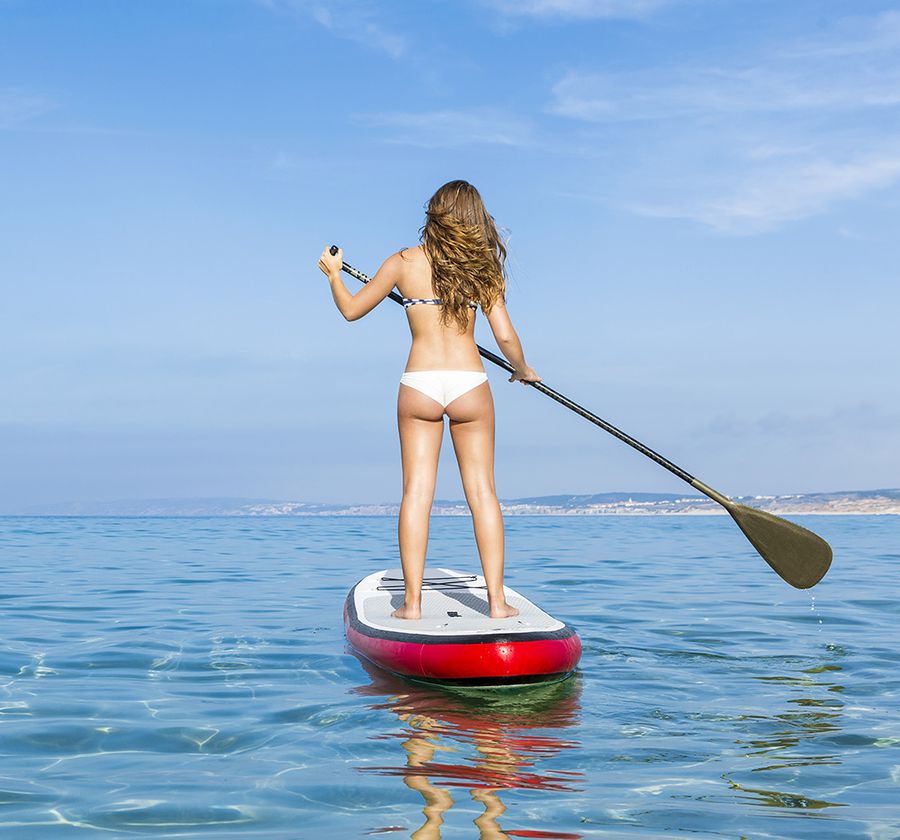
Stand-up paddleboarding (SUP) has moved away from just a resort sport-something you can only find at fancy beachside properties-to an activity that you can do anywhere you can find a body of water. You can take a SUP class, go on a SUP trip, and rent SUP boards at most sporting goods stores. But with the recent explosion of the sport, little research has actually been done on the effectiveness of stand-up paddleboarding as an exercise, until now.
The American Council on Exercise (ACE) recently released two studies that looked at the benefits of the popular watersport and found that leisurely paddling may not get you the workout you think you’re getting when you hop on a board.
For the first study, researchers tested the common theory that SUP is a major core workout. Because SUP involves maintaining your balance on a board with water underfoot, the belief is that your core muscles need to fire more to steady yourself. Study participants paddled at three levels of difficulty-light, somewhat hard, and hard/heavy (but not at maximal exertion). Researchers found that when people paddled at or above a light level of perceived exertion, the erector spinae (muscles of the back) and rectus abdominis (abdominal) muscles were stimulated enough to boost strength. The external obliques, on the other hand, weren’t activated enough to improve strength unless people were paddling really hard. (Try these 10 Oblique Exercises for a Flat Stomach, Fast.)
The key to activating those obliques? "The ability to turn the shoulders and really dig in to create torso rotation creates more power in the paddle stroke and better recruitment of the external obliques," lead study author John Porcari, Ph.D. told ACE. Plus, it's actually considered proper form to rotate from the torso as you paddle, so if you really want to tone your obliques, twist from your core with each stroke you take and paddle at a pace that feels heavy, really digging the paddle into the water.
In the second study, researchers looked at the cardiovascular element of SUP and found that when people were allowed to select their own pace to paddle at (the pace you would probably go if you're just chatting with friends and looking out for wildlife along the way), they averaged a heart rate of 55 percent of their max, almost ten percent short of the first target heart rate zone, which is considered moderate training by the American College of Sports Medicine. Even when researchers asked a group of experienced paddlers to go at their top speed, their average heart rate didn't reach the steady-state training zone. So while you may not be able to count SUP as your cardio for the day, you probably don't need a study to tell you that it's a fun way to stay active outside this summer. Besides, we'll take it over crunches any day.






























 FITNESS MOTIVATION
FITNESS MOTIVATION







